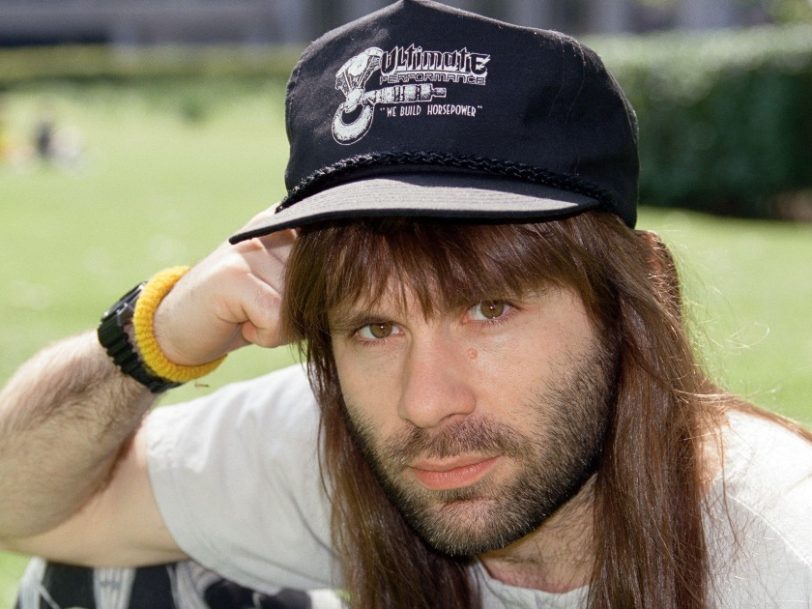First issued in May 1992, Iron Maiden’s ninth album, Fear Of The Dark, represented the end of an era for the band. It became long-time producer Martin Birch’s last hurrah prior to his retirement, and – perhaps more significantly – it proved to be the last Maiden album to feature vocalist Bruce Dickinson until he returned to the fold for 2000’s Brave New World.
The changes didn’t end there, either, as the metal titans even reassessed the way they presented their work in the visual sense. To the surprise of many, a design by original Maiden sleeve artist Derek Riggs was passed over for a work by newcomer Melvyn Grant. Now highly regarded as one of the best Iron Maiden album covers, Grant’s striking Fear Of The Dark artwork depicted the band’s iconic mascot, Eddie, transformed into what biographer Mick Wall referred to as “some sort of Nosferatu tree figure leering at the moon”.
Listen to ‘Fear Of The Dark’ here.
“We wanted to upgrade Eddie for the 90s,” Iron Maiden’s manager, Rod Smallwood, revealed in Wall’s book Run To The Hills: Iron Maiden – The Authorised Biography. “We wanted to take him from the sort of comic-book horror creature and turn him into something a bit more straightforward so that he became even more threatening.”
“When it comes to playing, we’re still out there fighting”
Smallwood was acutely aware that his charges also needed a similar sonic “upgrade” in the 90s – a decade in which alternative rock would hold sway and metal’s old guard were required to adapt to survive. Indeed, when Fear Of The Dark was released, on 11 May 1992, Nirvana’s Nevermind was the world’s biggest-selling album, and grunge was completely reshaping the rock landscape – a development greeted with mixed feelings by Iron Maiden.
Highlighting Soundgarden as his favourite of grunge’s hometown heroes, Bruce Dickinson told Kerrang!, “Some of the Seattle stuff is good, some of it is bollocks. It’s actually what the English bands should be doing, because all [the US bands have] done is nicked from Black Sabbath and recycled English rock.”
Nonetheless, Iron Maiden had made a point of paring back their sound on their previous album, 1990’s No Prayer For The Dying. That record came shorn of the synthesisers and complex song arrangements that had been such a feature of late-80s Maiden outings such as Somewhere In Time and Seventh Son Of A Seventh Son, and Fear Of The Dark broadly pursued a similar agenda. As the hardboiled likes of Weekend Warrior, the heavy, frenetic Be Quick Or Be Dead and the album’s barnstorming title track quickly revealed, raw, aggressive hard rock was once again Maiden’s primary currency.




